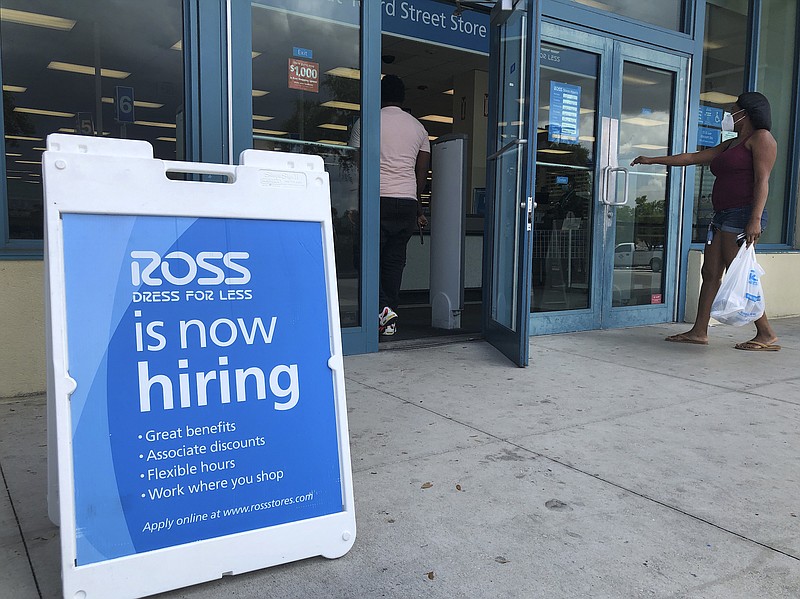The U.S. unemployment figures for July send a muddled message to lawmakers struggling to reach a deal on a new coronavirus relief package. According to the Bureau of Labor Statistics, non-farm employers added 1.8 million jobs - an enormous number in normal times - and the unemployment rate dropped again by nearly a full percentage point. Yet that rate is still higher than it ever was during the last recession, and more than 16 million Americans remain jobless.
The jobs rebound in July was also muted in comparison with the gains in June, reflecting how the surge in COVID-19 infections prompted some states to pull back on their reopening plans. That surge continued through July, portending ill for the August jobs numbers that will come out in a month.
In other words, the news is both encouraging and sobering. But buried in the numbers is a clear signal that lawmakers have to start preparing for a long slog out of the economic wilderness.
The most troubling data point comes from an analysis by the Peterson Institute for International Economics, which noted that even if all 8.4 million people who classified themselves as temporarily laid off in July were recalled to work immediately - "a very optimistic scenario," as the authors put it dryly - the U.S. unemployment rate would still be 7%, or twice its pre-pandemic level. "These data suggest the temporary labor market problems are very deep," the institute writes, "and that even if individuals on temporary layoff returned to work very quickly, the United States would still have a recessionary level of unemployment for some time to come."
It wasn't all that long ago when Congress thought a 90-day increase in unemployment benefits, two months of aid for small businesses and a round of $1,200 stimulus checks would get us over the hump. The $2.2-trillion Coronavirus Aid, Relief and Economic Security Act certainly helped keep things from getting worse, but the assumption behind its enactment - that the country would bounce back quickly from the pandemic and the recession it caused - has proved to be quixotic.
So what now? It seems equally quixotic to think that a second big shot of stimulus will finish the job of righting the economy. At the same time, though, it seems like precisely the wrong time to sharply reduce or eliminate entirely the increased unemployment benefits. That's one of the main points of contention between the Trump administration and congressional Democrats as they wrangle over a sequel to the CARES Act.
The conservative Heritage Foundation think tank put out a statement Friday that, like many congressional Republicans, simply asserts as fact that higher unemployment benefits deter people from taking jobs. A recent Yale study disputes that notion (although that study has critics too). But a second point made by Heritage fellow Rachel Greszler is much closer to the mark.
"While there is still a ways to go in getting Americans safely back to work, continued signs of recovery demonstrate why public health - not more 'stimulus' - should be the focus," Greszler wrote. "Congress can't force people to spend money at restaurants, hotels, or on airlines if they don't yet feel comfortable doing so ."
Unfortunately for Greszler, improving public health will require considerably more government spending in support of testing, contact tracing and isolating people exposed to the virus. Federal dollars also will be needed to support families who can't safely work or go to school, and to keep vital state and local services (think: public safety, schools, public health) intact despite the sharp drop in revenue.
It's hard to find an economist who wouldn't tell you that the government's first job should be to bring COVID-19 under control. What we're seeing, though, is that it's harder than anybody thought in the run-up to the CARES Act. And despite the sparks of hope in reports like the one Friday from the Bureau of Labor Statistics, the damage the pandemic has wrought to the economy appears to be deeper and more enduring than we'd expected.
The Los Angeles Times
